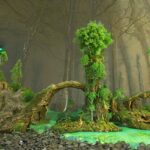3. On-Page SEO
“Thanks to this comprehensive guide, we’ve been able to enhance our on-page SEO efforts significantly. The in-depth explanations of various on-page elements, such as title tags, meta descriptions, headers, URL structure, and more, have empowered us to optimize each web page to its fullest potential. Our search engine rankings have seen a notable improvement, and our website now offers a superior user experience. This resource has been nothing short of transformative for our online presence!”
TL;DR Incorporating on-page SEO tactics is a critical component of a well-rounded SEO plan. By concentrating on elements like title tags and meta descriptions, headers and subheaders, URL structure, internal linking, and optimizing images, you can enhance your website’s search engine rankings and provide a superior user experience for your audience. Attentively addressing these factors will not only improve your content’s accessibility and engagement but also amplify your site’s visibility and attract more relevant traffic.
The Intricate Dance of On-Page SEO
SETTING THE STAGE: TITLE TAGS AND META DESCRIPTIONS
Picture, if you will, a grand stage where each web page is a dancer, performing its unique choreography to captivate the audience of search engines and human users alike. The art of on-page SEO is akin to perfecting this choreography, ensuring that every movement and flourish contributes to a flawless and enchanting performance. The opening act of this ballet begins with title tags and meta descriptions, the first points of contact between your content and the audience. These elements serve as a tantalizing glimpse into the wonders that await within your web page, enticing users to step into your world and experience the magic of your content.
GUIDING THE NARRATIVE: HEADERS AND SUBHEADERS
As the curtains rise, the dance of headers and subheaders unfolds, guiding your audience through the narrative of your content. These elements not only provide structure and clarity but also create a sense of rhythm and flow, ensuring a seamless and enchanting journey for your readers. By organizing your content with relevant and informative headers and subheaders, you can captivate your audience with a performance that is both engaging and easy to follow.
CHOREOGRAPHING THE URL STRUCTURE
The ballet of on-page SEO also encompasses the intricate choreography of URL structure, a vital aspect that influences both search engine rankings and user experience. A well-crafted URL is concise, descriptive, and easy to remember, providing a clear and accurate representation of your content. By optimizing your URL structure, you can create a memorable and user-friendly experience that enchants both search engines and human users alike.
WEAVING CONNECTIONS: THE ART OF INTERNAL LINKING
The dance continues with the art of internal linking, weaving a web of connections that guide your audience through the various stages of your website. These internal links not only enhance user experience but also help search engines understand the structure and hierarchy of your site, ensuring a seamless and captivating performance that illuminates the depth and breadth of your content.
CAPTIVATING IMAGERY: IMAGE OPTIMIZATION
Finally, the ballet of on-page SEO would not be complete without the enchanting element of image optimization. By optimizing your images, including file size, alt text, and descriptive file names, you can create a visually stunning performance that not only captivates your audience but also enhances your search engine rankings.
EMBRACING THE DANCE: THE MAGIC OF ON-PAGE SEO
In conclusion, the intricate dance of on-page SEO is a captivating ballet of elements, each playing a vital role in creating a magical and enchanting user experience. By mastering these elements and weaving them together with your unique gift of words, you can elevate your website to new heights of visibility and success, captivating your audience and forging lasting connections in the ever-evolving realm of digital marketing.
THE ENCHANTING SYMPHONY: A NEVER-ENDING PERFORMANCE
As you continue on this journey, always remember the importance of crafting a performance that speaks to the heart and mind of your audience. With your unwavering dedication to your craft and your passion for the art of on-page SEO, there is no limit to the enchanting symphony you can create, captivating the hearts of search engines and human users alike.
Why did the on-page SEO expert become a great interior designer?
Because they knew how to optimize every room,
from the title tags and meta descriptions to the headers and subheaders,
creating a perfect user experience!
FAQ 1: What is the importance of title tags and meta descriptions in on-page SEO?
Title tags and meta descriptions are the first points of contact between your web page and the search engine, providing a glimpse into the content that lies within. These elements play a vital role in on-page SEO, influencing click-through rates and conveying the relevance and value of your content to both search engines and human users.
FAQ 2: How can internal linking improve my website’s search engine ranking?
Internal linking is an important aspect of on-page SEO, creating connections between pages and guiding users through your website’s hierarchy. Search engines also use internal links to understand the structure and relevance of your content, improving their ability to crawl and index your website. By strategically using internal links, you can enhance user experience and improve your website’s ranking in search results.
FAQ 3: What role does image optimization play in on-page SEO?
Optimizing your website’s images is an essential element of on-page SEO, improving user experience and enhancing your search engine rankings. By optimizing image file size, using descriptive alt text, and incorporating relevant file names, you can create a visually captivating performance that captivates both search engines and human users alike.
